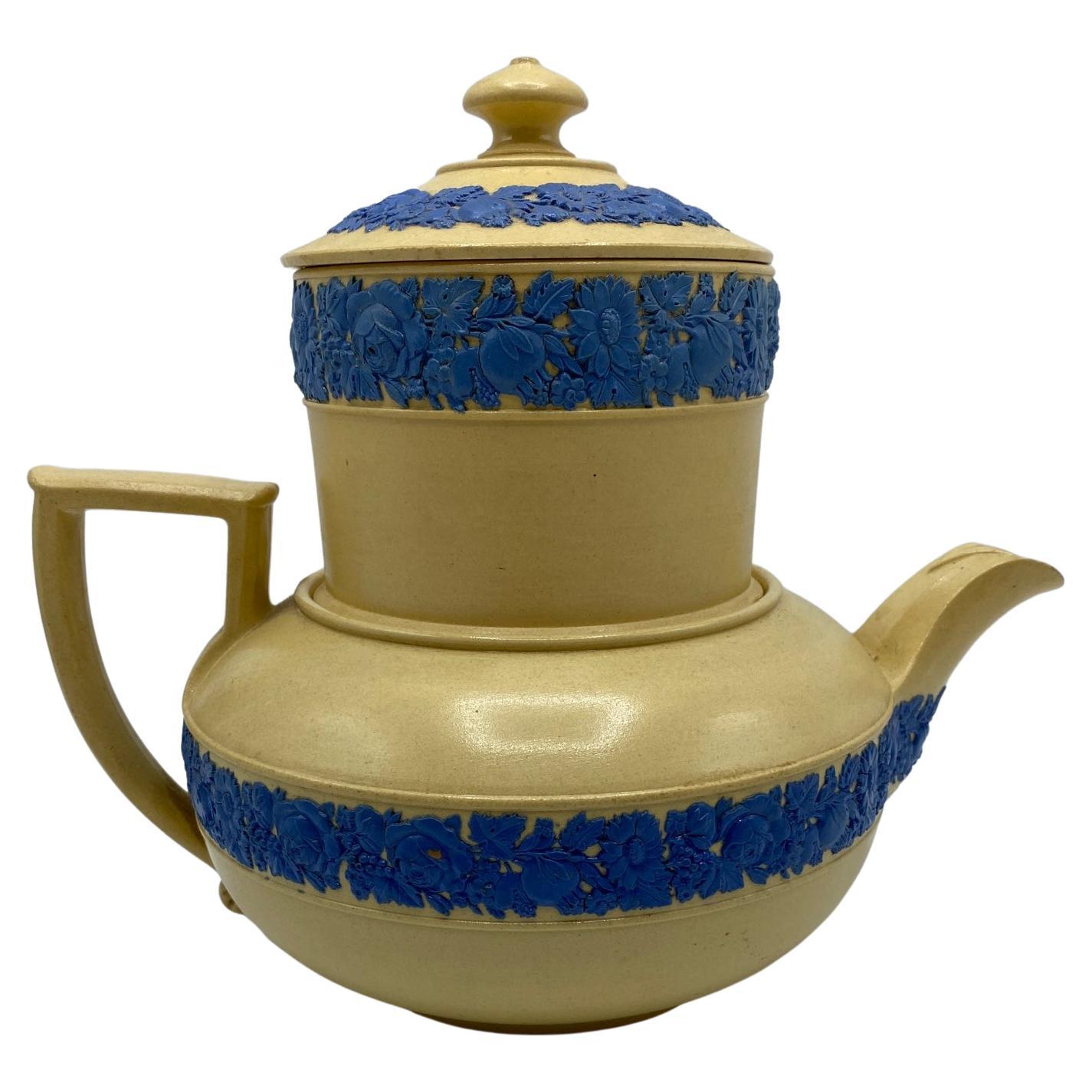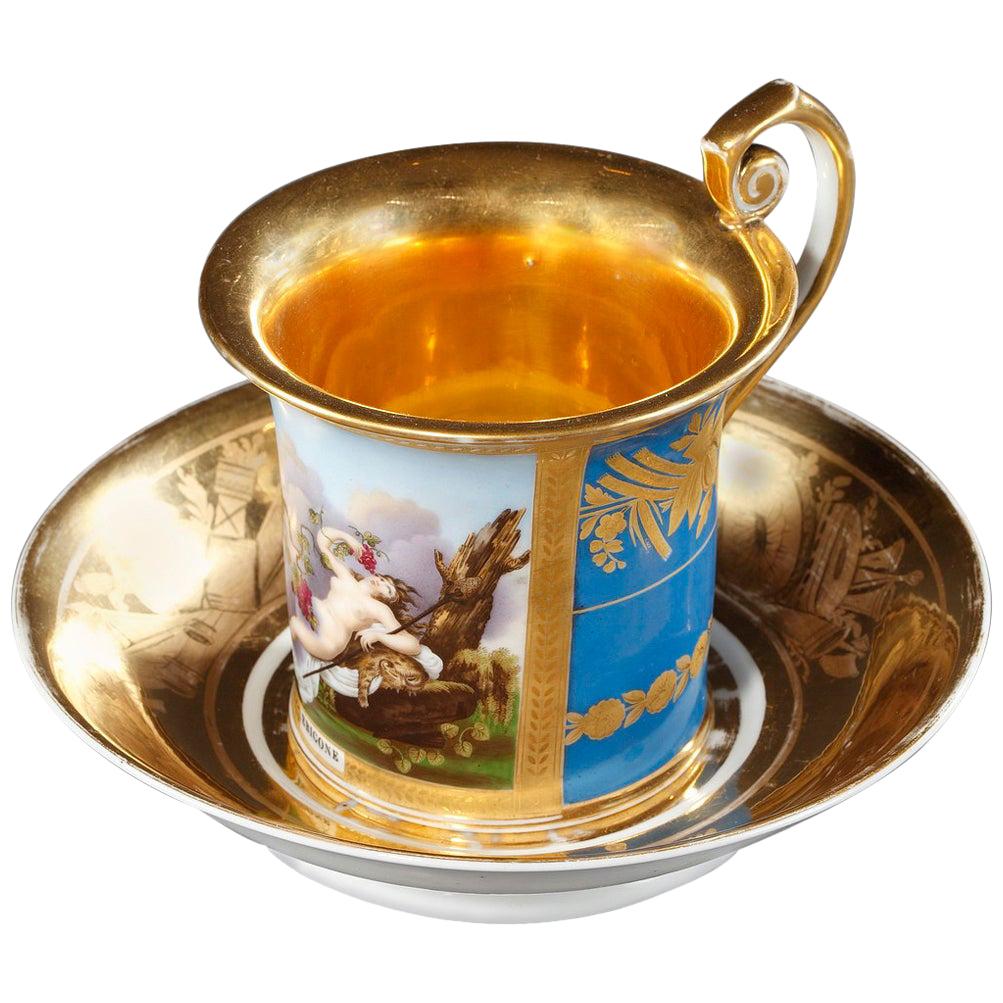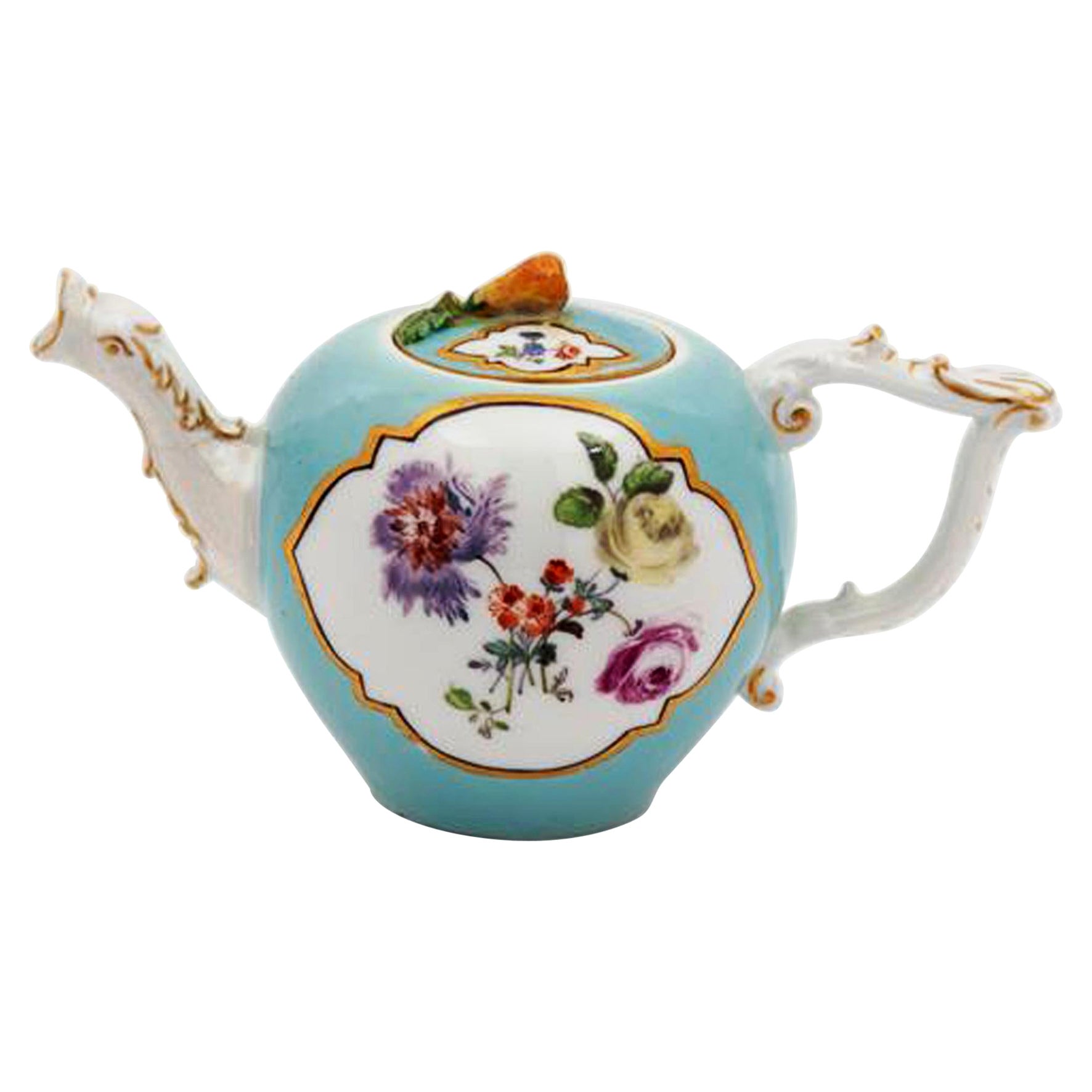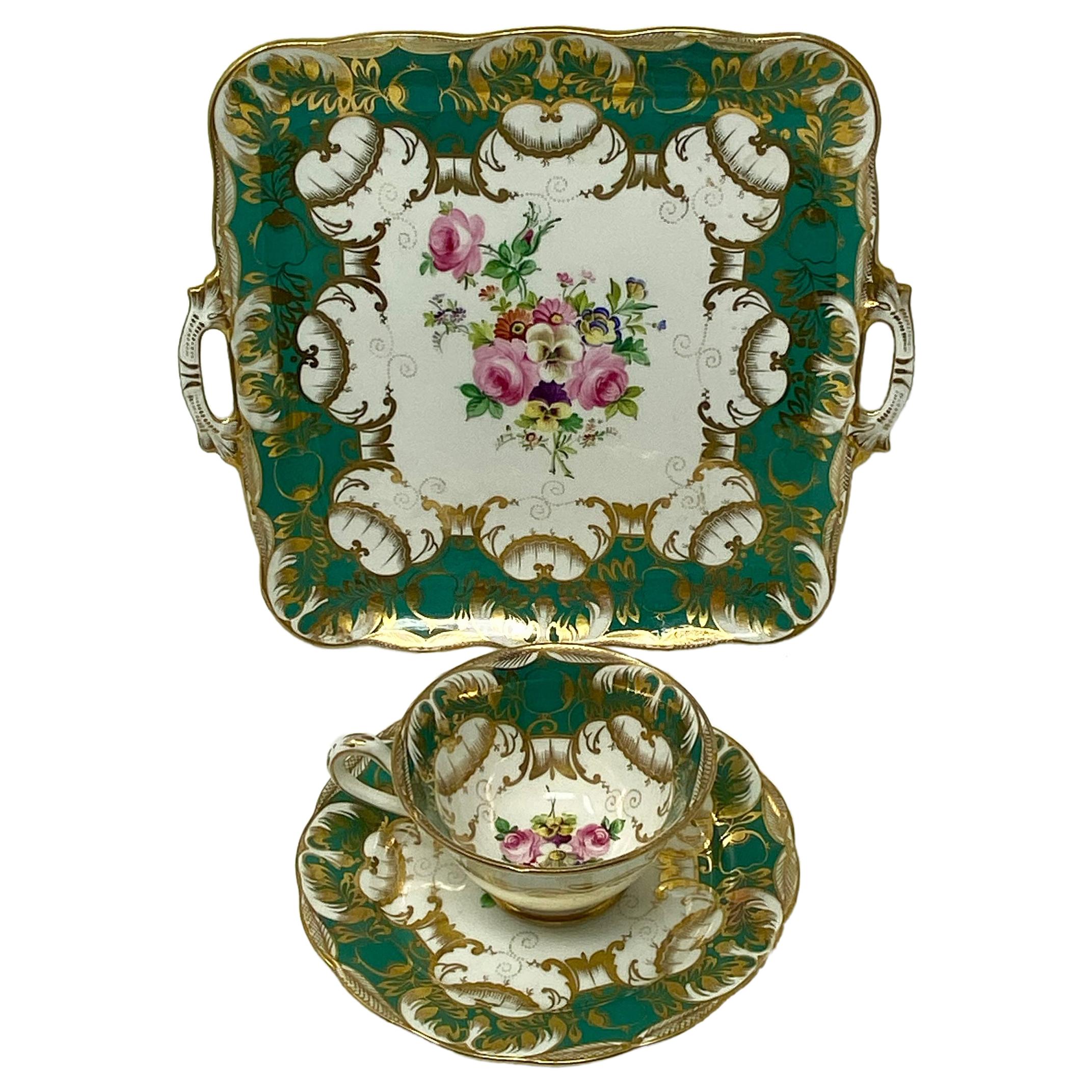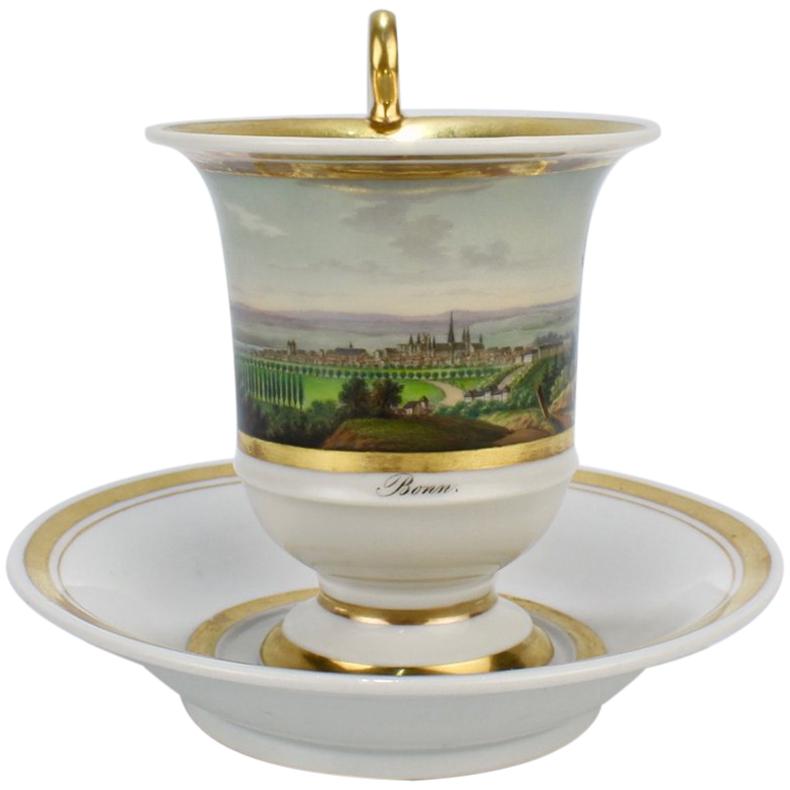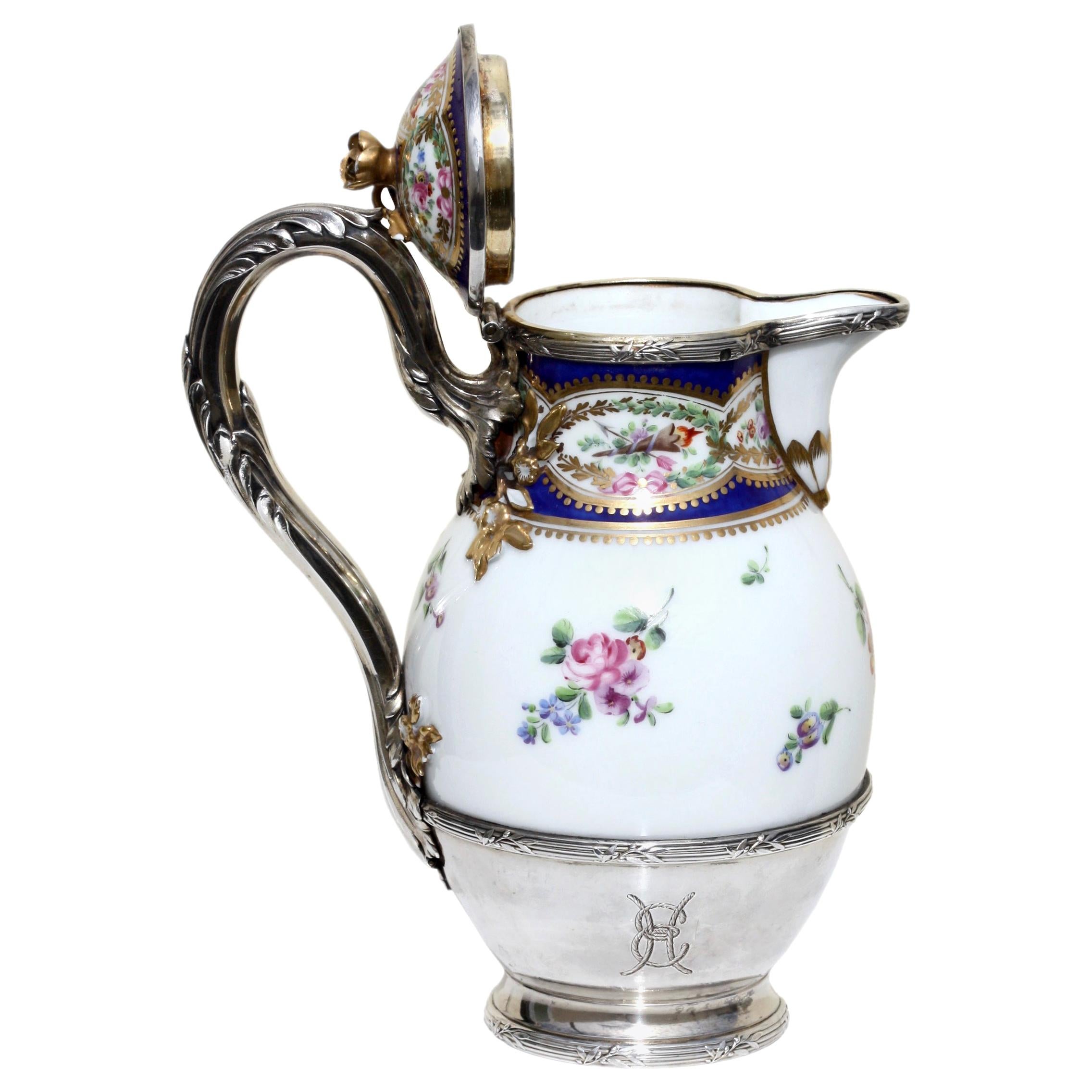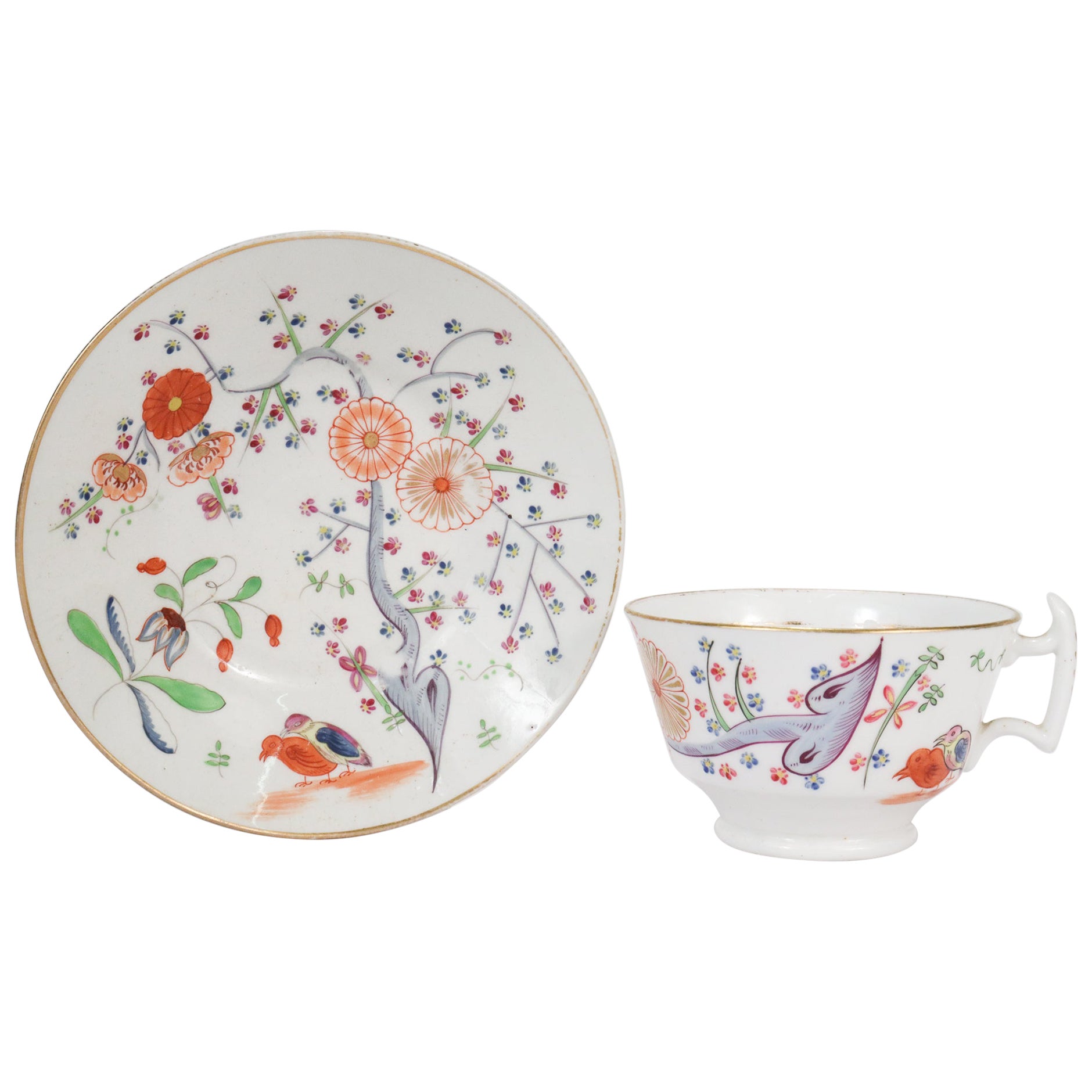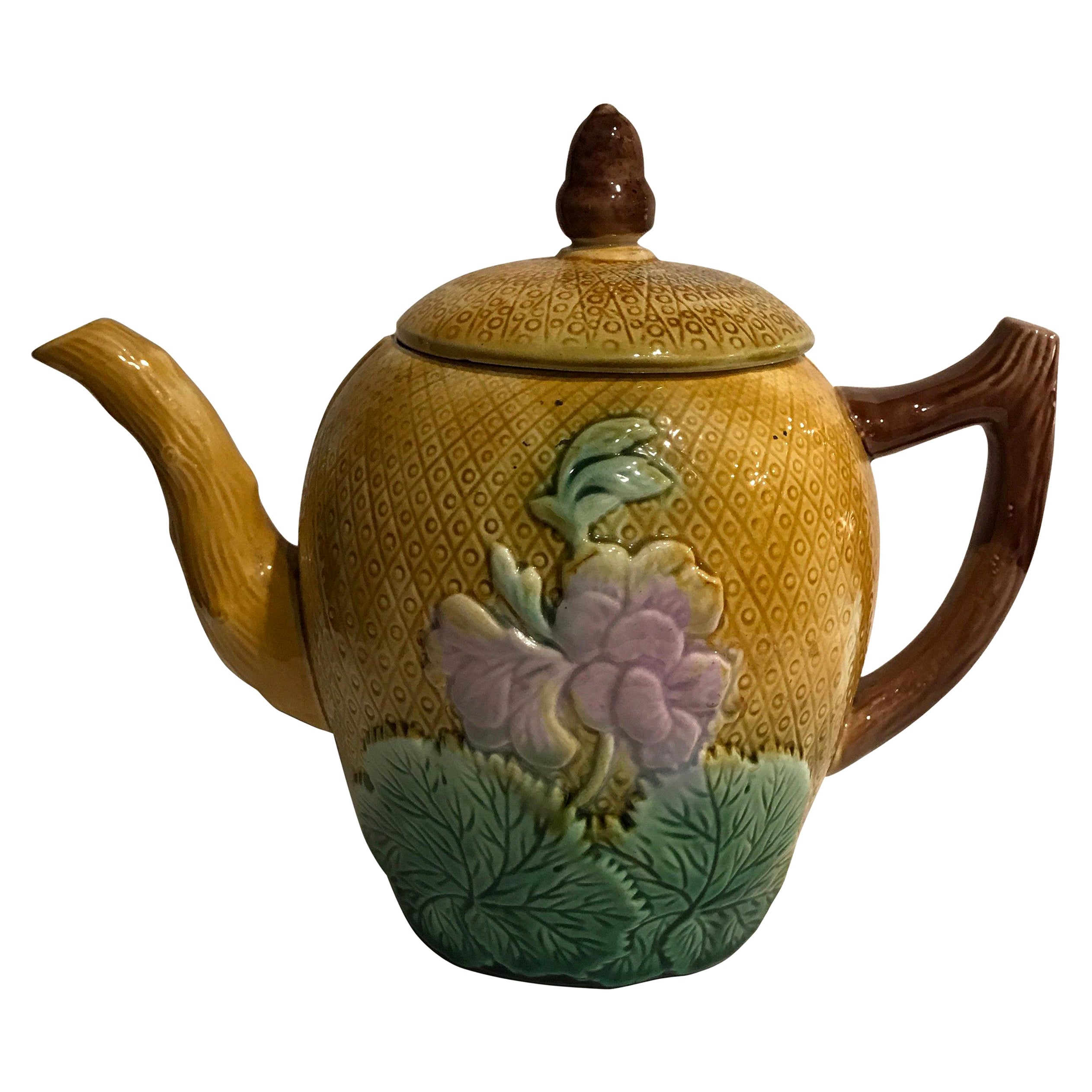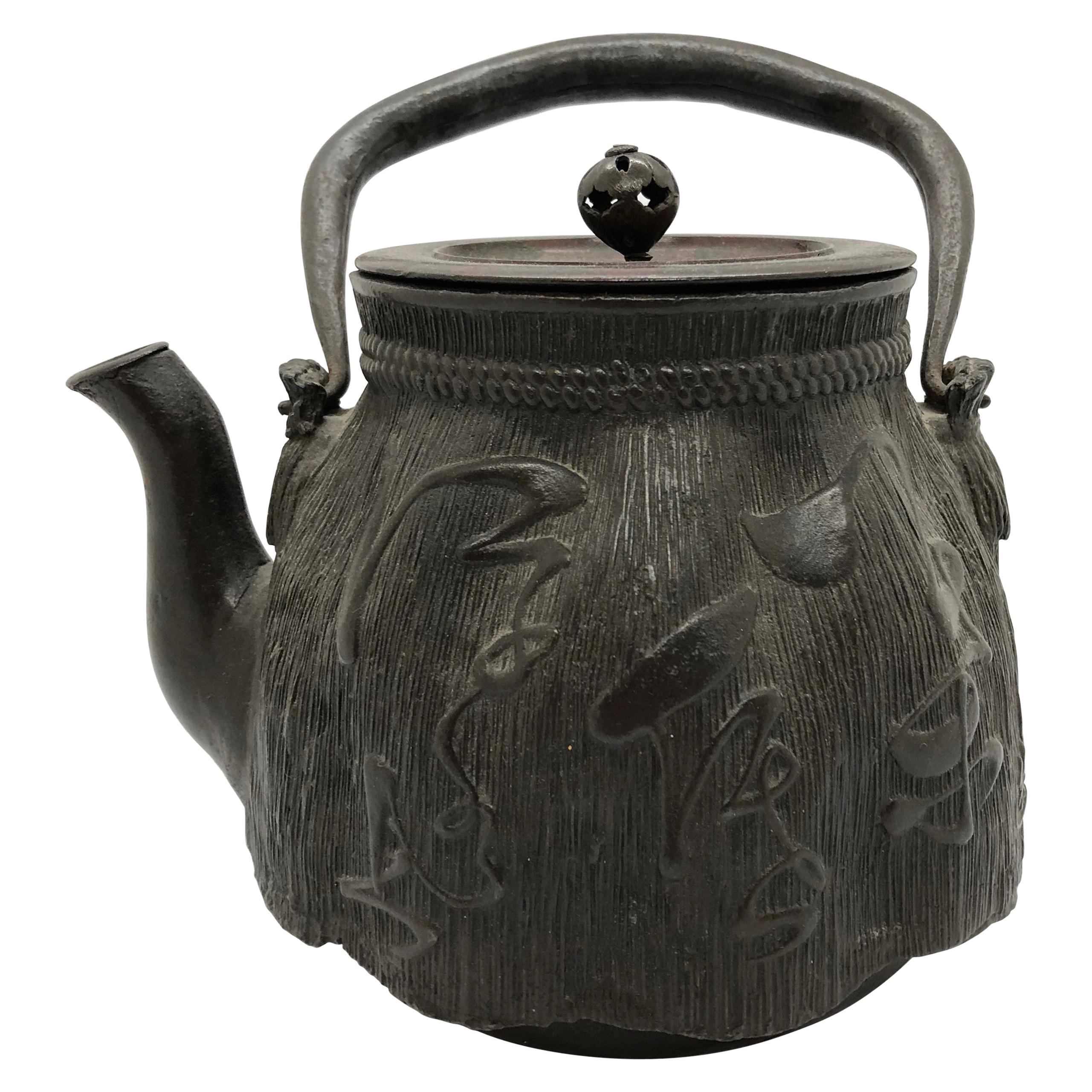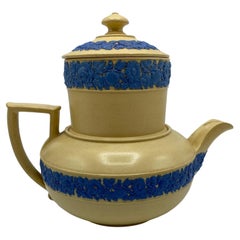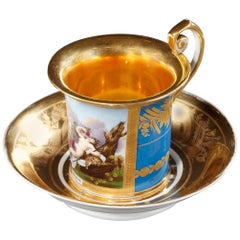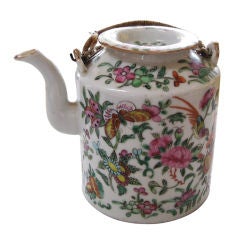
19th Century Famille Rose Teapot
View Similar Items
1 of 8
19th Century Famille Rose Teapot
About the Item
- Dimensions:Height: 5.5 in (13.97 cm)Width: 6.25 in (15.88 cm)Depth: 4.5 in (11.43 cm)
- Materials and Techniques:
- Place of Origin:
- Period:
- Date of Manufacture:19th Century
- Condition:Very good condition commensurate with age.
- Seller Location:Corona Del Mar, CA
- Reference Number:Seller: SCKA 15541stDibs: U1007248540236
You May Also Like
- Early 19th Century Wedgwood Porcelain Biggin Teapot with Blue Glazed AccentsBy WedgwoodLocated in Middleburg, VA1820 Wedgwood Biggin teapot. Dating to the 1820s this is a spectacular and elegant biggin. This is named for Mr. Biggin, who developed the form in 1817. Biggins can be used as teapots or coffee pot, with the upper part holding tea leaves or coffee grounds and having two perforated strainers through which boiling water is poured. The lid has a small round button handle with a hole in the center to vent steam. Wedgwood decorated the lid, upper section and lower body with applied blue glaze, finely detailed floral bands. The body design is the same Wedgwood used...Category
Antique Early 19th Century English Porcelain
MaterialsPorcelain
- Early 19th Century German Porcelain CupLocated in Paris, FRPorcelain cup decorated with a scene depicting Erigone lying down on a cheetah skin and eating grapes. In Greek mythology, Dionysus (also known as Bacchus...Category
Antique Early 19th Century German Empire Porcelain
MaterialsPorcelain
$2,300 / set - 18th Century Meissen Miniature Turquoise-Ground Botanical Teapot and CoverBy Meissen PorcelainLocated in Downingtown, PAMeissen miniature Turquoise-ground teapot and cover, 1735-40 The Meissen porcelain miniature teapot has a turquoise ground with a shaped cartouche ...Category
Antique 1730s German Georgian Tea Sets
MaterialsPorcelain
- 19th Century Meissen Hand Painted Cup and SaucerBy Meissen PorcelainLocated in Lambertville, NJDiminutive whimsical 19th century Meissen cup and saucer. The purple trim with gilt decoration with birds and insects. The saucer is 5 inches in...Category
Antique 19th Century German Porcelain
MaterialsPorcelain
- Bow Porcelain Orphaned Coffee Cup, Famille Rose Peony, circa 1755By Bow PorcelainLocated in London, GBThis is a very charming orphaned coffee cup made by the Bow Porcelain factory in about 1755. The cup is decorated in a Chinese "famille rose" peony pattern. This cup would have been part of a large tea service, and the tiny size shows how expensive coffee was in the 18th Century. The Bow Porcelain Factory was one of the first potteries in Britain to make soft paste porcelain, and most probably the very first to use bone ash, which later got perfected by Josiah Spode to what is now the universally used "bone china". Bow was the main competitor of the Chelsea Porcelain Factory, but where Chelsea made very fine slipcast porcelain, Bow made a different soft paste porcelain that tended to be softer and could be pressed into moulds. Bow served a larger public generally at lower prices. The factory was only in operation between 1743 and 1774, after which the tradition got incorporated into some of the later famous potteries such as Worcester and Derby. The cup is unmarked, which is normal for Bow items of this era. Condition report the cup is in excellent condition without any damage or repairs. There are various glazing imperfections, which are quite normal for porcelain of this era. Antique British porcelain...Category
Antique 1750s English Rococo Tea Sets
MaterialsPorcelain
- Antique English 19th Century Porcelain Dessert and Coffee SetLocated in New Orleans, LAThis lovely Antique English 19th century porcelain dessert and coffee set consists of 10 pieces. The coloring on the pieces has remained strong. The green is particularly lovely and ...Category
Antique 19th Century English Porcelain
MaterialsPorcelain
Recently Viewed
View AllMore Ways To Browse
Bird Teapot
Antique Rose Teapot
Antique Metal Teapot
Antique Metal Teapots
Teapots with Birds
Handpainted Roses
Butterfly Teapot
Famille Rose Teapot
Antique Blue Staffordshire
Monumental Louis Xvi
Victorian China Porcelain
Blue Glass Birds Set
Rothschild Furniture
Antique Green Porcelain Plate
Chinese Bow
Napoleon Gilt Bronze Glass
China Dish Patterns
Bone Cup
